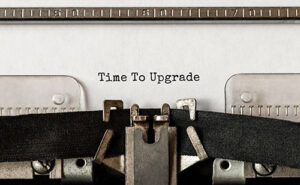Your EDI system must support the functions that are critical to your business. At the same time, it must be adaptable, easy to use, and allow for future growth.
Can you identify with any of the EDI issues described below? If so, it may be time for an EDI upgrade to replace your legacy EDI system.
High Operating Costs
It’s getting very expensive to operate, especially if your EDI is no longer supported by the vendor. If you’re on maintenance only, it may be difficult to change specifications when needed.
The maintenance contract itself might be limiting. In turn, making it challenging to drop a trading partner that you are no longer doing business with. Many aging EDI systems also have dramatic and unpredictable price increases.
Limited Functionality
Your EDI system is slow, hard to use, inflexible and it cannot meet your changing requirements. Also, you may be unable to test new customer EDI communications. Plus, you’re unable to integrate with your ERP system altogether.
Worst of all, you don’t have access to quality technical support. When you need to make changes, you’re directed to an off-shore technical group. This group is not familiar with your business or your industry.
Outdated Software
It’s so ancient that the provider who wrote the original software is no longer in business. The system has gone years without upgrades or migrations. As a result, your system hasn’t evolved with new technology or industry standards.
Thus, you’re left without access to new releases and patches to your existing version. In contrast, your competitors are using the latest EDI system upgrades to improve productivity. Meanwhile, you’re still looking at the same stale, old, green screen user-interface.
Your business relies on your EDI system. Namely, to ensure customer satisfaction, trading partner compliance, and the flow of information.
Adding or changing software into existing business processes can be overwhelming. But, consider the costs of maintaining the status quo. When determining if your business is ready to upgrade to a new EDI solution. be sure to consider the total cost of ownership.
In particular, consider not only software cost, maintenance and support. But you also need to think about extra costs to keep the legacy system going. These may include manual work arounds and reporting to meet customer requirements. Most often, it is less expensive in the long run to replace and upgrade EDI to a new system.
Radley’s EDI experts can help you determine if now is the time to upgrade your EDI system. Request your demo today. Or visit our site to learn more about Radley EDI solutions.



